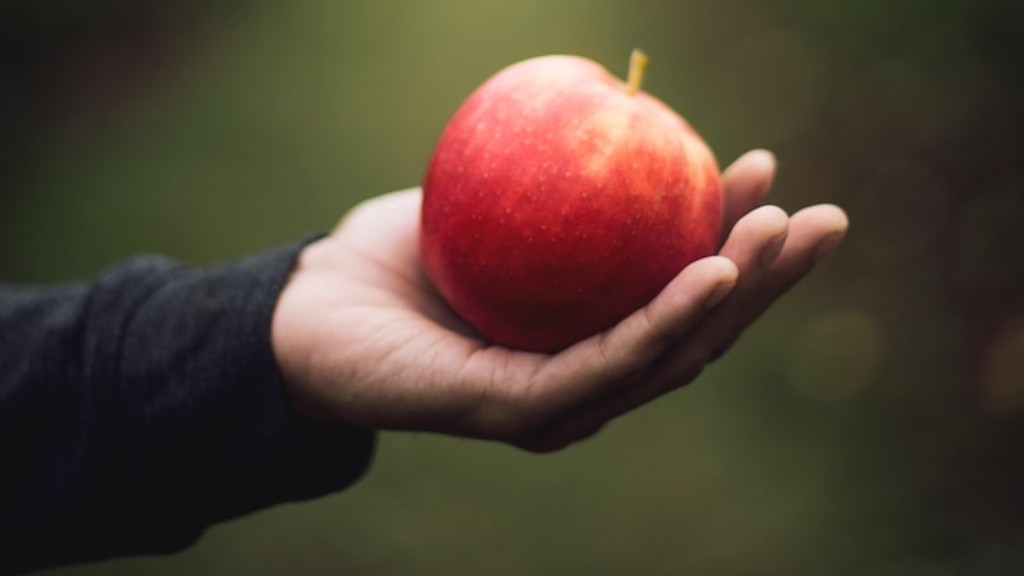Many avid gardeners have a beloved avocado tree that they tend to carefully. The problem is, while they are relatively easy to care for initially, they require frequent replanting or repotting in order to continue growing and flourish. Repotting is a relatively simple procedure that involves the process of moving an existing plant from one pot to another. For the best results, it is important to be methodical and use quality materials to ensure that the transition goes as smoothly as possible. Here we will outline how to repot an avocado tree, from start to finish.
The first step in the process is to determine when the avocado tree needs to be repotted, as it is unlikely to need it every year. Generally, if the tree has become root bound, meaning the roots are circling the bottom of the pot, then it needs to be repotted.
After this has been determined, the necessary tools and supplies need to be gathered. This includes potting soil, a container suitable size for the tree, and possibly wire mesh, in order to add stability to the repotted tree.
Next, the soil around the tree needs to be carefully loosened, in order to remove the tree from the pot. Place the tree in the new pot and fill it with the chosen soil mixture. Add the wire mesh, if need be, and carefully pack down the soil to make sure that the tree is firmly held in place.
Lastly, apply a generous layer of mulch to the soil surface and give the tree a thorough watering. This is an important step, as the repotting process will shock the tree and moisture will help it to recover more quickly.
Pruning
After the tree has been repotted, it is important to give it a proper pruning. This will help to focus the tree’s energy on root growth, instead of branch growth. Start by removing any dead or broken branches, then shape the tree by pruning to the desired shape.
It is important to only prune about a quarter to a third of the tree’s overall growth, as too much pruning can weaken the tree overall. Additionally, some avocado tree varieties do not respond well to pruning and so it is important to research this beforehand.
The final step to the pruning process is to fertilize the tree. If high quality potting soil was used, it likely has enough nutrients for the tree to grow and thrive, but it never hurts to give it some food after repotting. Like pruning, different avocado tree varieties have different needs when it comes to fertilizer and so research is key here as well.
Seasonal Care
Avocado trees require different levels of care depending on the season. In the winter, they need fewer water and less pruning, while they need quite a bit of water and pruning over the spring and summer. Additionally, it is important to watch for pests and diseases, as these can quickly get out of hand and affect the health of the tree.
It is a good idea to develop a holistic approach to caring for the tree throughout the year. This includes monitoring the tree for signs of stress or disease, as well as adjusting the fertilizer and watering levels accordingly.
Overall, repotting an avocado tree is relatively easy and the process itself is generally straight forward. The key is to take the time to properly prepare, with the right materials and process, in order to ensure the tree’s well-being after repotting.
Choosing a Container
Choosing the right container for an avocado tree is an important process, as the wrong container can stunt the growth of the tree. The container should be roughly twice the size of the current pot and should be both deep and wide, in order to ensure that the roots have plenty of room to grow. Additionally, it is important to select a container with holes in the bottom, to ensure that the tree does not become waterlogged.
It is a good idea to pick a slightly larger container than necessary, as this will make it easier to repot the tree as it grows. The advantage of this is that the tree won’t have to be repotted as frequently, which will help to limit the amount of shock it experiences.
Finally, when selecting a container, it is best to go with one made of a material that will be able to withstand the elements. This could be something like terracotta or glazed pottery. The main point here is to make sure that it won’t crack or be damaged due to cold, heat or the tree’s roots.
Staking
Once the tree is repotted and pruned, it may need to be staked in order to help it stand up tall and straight. Staking a tree can help to support it as its roots are still getting established in the new pot. Additionally, it can help keep the trunk from becoming twisted, which can happen when the wind blows the branches in different directions.
It is important to use a strong, thick stake that is firmly planted into the pot and can support the weight of the tree. If a plastic stake is used, make sure it is durable enough to withstand the elements. Once the stake is in place, use a durable material, such as soft gardening twine, to tie the tree securely to the stake.
Also, it is important to not leave the tree staked for too long, as this can weaken the root system and cause the tree to be less stable overall. Ideally, the tree should be staked until the roots become established and the tree can stand up on its own.
Fertilization
Fertilizing an avocado tree is a necessary part of the overall repotting process. While fertilizer is not an immediate necessity after moving the tree to a new pot, a little bit of food can go a long way to ensure that the tree is fully healthy and continues to grow.
When selecting a fertilizer for an avocado tree, make sure it is high-quality and specifically formulated for these types of trees. Additionally, water soluble, liquid fertilizer is best, as this offers the quickest response and ensures that the fertilizer is applied directly to the roots.
Finally, too much fertilizer can be just as detrimental to the tree as none at all, so it is important to apply only the recommended amount. Generally, a tablespoon or two of fertilizer will suffice; however, it is essential to read the instructions carefully and as previously mentioned, to research the particular needs of the tree beforehand.
Pollination
In order for an avocado tree to bear fruit, it must be properly pollinated. This is generally done with the help of an insect or other pollinator, although in some cases it may need to be done manually with a soft brush. Without proper pollination, the tree will likely flower but it will not produce a fruit.
When pollinating, it is important to ensure that the flowers get good exposure to the sun and that it is done at the right time of the day. This will ensure that the pollen is delivered in the most effective way and that the flowers get the best chance of being successfully pollinated.
In addition, the tree should be checked periodically for signs of fruit, as this will help to determine if the pollination has been successful. This is also an effective way to track the tree’s overall health, as fruit is an indication that it is thriving and doing well.
Container Maintenance
Finally, it is important to take proper care of the container that the avocado tree is in. This includes periodically emptying any excess water from the bottom, as well as inspecting the container for signs of damage. If there are any signs of cracking, peeling or other issues, it is important to replace the container as soon as possible.
Just as the tree needs to be checked for signs of disease or distress, the container should be inspected as well. This is especially important during the winter, when the cold temperatures can cause certain materials to crack.
Regularly cleaning the container is also important, as this helps to keep the tree healthy and prevent the spread of pests or diseases. This can also help to keep the tree looking its best and make sure that it continues to produce healthy flowers and eventually, fruit.




